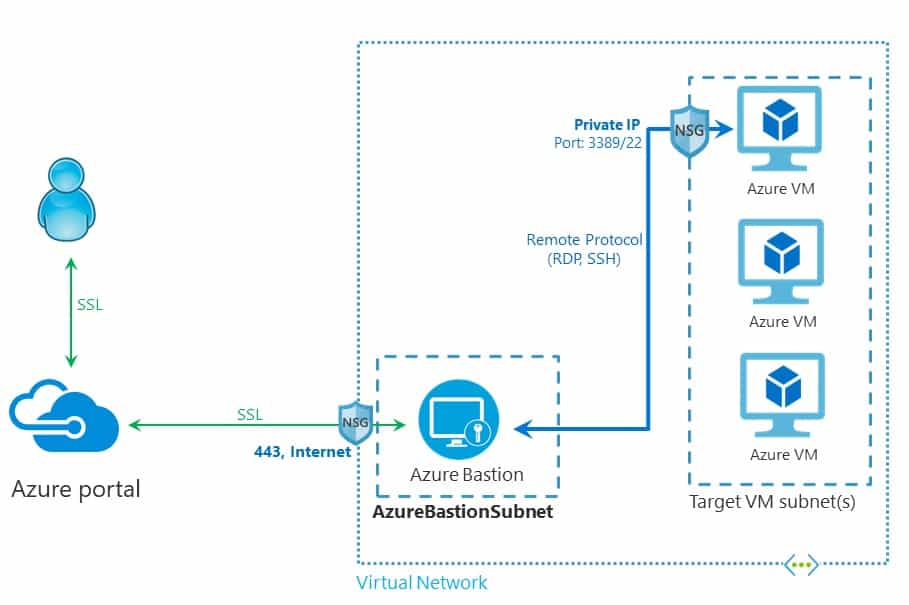
You can leave the default naming suggestion. The public IP address must be in the same region as the Bastion resource you're creating. The Public IP address section is where you configure the public IP address of the Bastion host resource on which RDP/SSH will be accessed (over port 443). Select Save at the bottom of the page to save your values.Īt the top of the Subnets page, select Create a Bastion to return to the Bastion configuration page.

If you don't see your VNet in the dropdown list, make sure you selected the correct Region in the previous settings on this page. For more information, see Host scaling and Pricing.Ĭonfigure the virtual networks settings.

For this tutorial, you can select the instance count you'd prefer. Use the slider or type a number to configure the instance count that you want. It's configured in scale unit increments. Instance count: This is the setting for host scaling. For more information about features that require the Standard SKU, see Configuration settings - SKU. The Standard SKU lets you configure the instance count for host scaling and other features. Choose the region in which your virtual network resides. Region: The Azure public region in which the resource will be created. Name: Type the name that you want to use for your bastion resource. Project details are populated from your virtual network values. On the Create a Bastion page, configure the settings for your bastion host. This lets you configure specific additional settings when deploying Bastion to your VNet. On the Bastion page, select Configure manually. On the page for your virtual network, in the left pane, select Bastion to open the Bastion page. Once Bastion is deployed, you can connect securely to any VM in the VNet using its private IP address. This section helps you deploy Bastion to your VNet. All Azure Bastion resources deployed in subnets of size /27 prior to this date are unaffected by this change and will continue to work, but we highly recommend increasing the size of any existing AzureBastionSubnet to /26 in case you choose to take advantage of host scaling in the future. For more information about Azure Bastion, see What is Azure Bastion?įor Azure Bastion resources deployed on or after November 2, 2021, the minimum AzureBastionSubnet size is /26 or larger (/25, /24, etc.).
Azure bastion install#
If your VM has a public IP address that you don't need for anything else, you can remove it.Īzure Bastion is a PaaS service that's maintained for you, not a bastion host that you install on one of your VMs and maintain yourself. After the deployment is complete, you connect to your VM via private IP address.

In this tutorial, you deploy Bastion using the Standard SKU tier and adjust host scaling (instance count). When you connect to a VM, it doesn't need a public IP address, client software, agent, or a special configuration. After Bastion is deployed, you can connect (SSH/RDP) to virtual machines in the virtual network via Bastion using the private IP address of the VM.
Azure bastion manual#
When you use manual settings, you can specify configuration values such as instance counts and the SKU at the time of deployment.

This tutorial helps you deploy Azure Bastion from the Azure portal using your own specified manual settings.


 0 kommentar(er)
0 kommentar(er)
